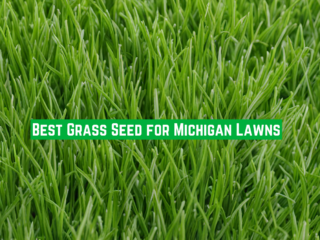There’s something truly enchanting about the dainty blue forget-me-not flowers.
With their vibrant azure petals and sunny yellow centers, they bring a touch of whimsy and romance to any garden setting.
These charming little bloomers have been cherished for centuries, not just for their beauty but for the sentimental meaning behind their name.
If you have been dreaming of adding a trail of these diminutive yet striking flowers to your outdoor space, you’re in luck!
We will get deep into the technique of growing these alluring flowers in this detailed blog post, so you may enjoy their majesty year after year.

Growing Blue Forget-Me-Not Flowers
Scientifically known as Myosotis, these herbaceous perennials belong to the Boraginaceae family, which comprises over 60 species.
The name “forget-me-not” stems from an old legend about a knight who, while attempting to retrieve a fallen flower from a river for his beloved, uttered these words before disappearing into the depths.
While there are several species within the Myosotis genus, the most common and well-loved variety is the woodland forget-me-not (Myosotis sylvatica).
Native to Europe and parts of Asia, this variety boasts clusters of delicate, five-petaled flowers in hues ranging from powder blue to deep indigo, gracing gardens with their presence from early spring through summer.
Choosing the Perfect Spot
Like most plants, forget-me-nots thrive best when their growing conditions are just right. These delicate beauties prefer partial shade to full sun, making them ideal candidates for planting beneath taller plants or along the edges of woodlands or water features.
They also appreciate consistently moist, well-draining soil rich in organic matter, as their shallow roots can struggle in dry or overly compacted earth.
When selecting a planting location, aim for an area that receives at least four to six hours of sunlight daily, with protection from the harsh afternoon rays during the peak of summer.
Amending the soil with compost or well-rotted manure before planting can provide the perfect blend of nutrients and improve drainage.
Planting and Propagation
Forget-me-nots can be grown from seed or transplanted as nursery-grown seedlings or divisions from existing plants. Whichever method you choose, the key is to ensure the plants have ample time to establish themselves before the heat of summer sets in.
If starting from seed, the ideal sowing time is in late fall or early spring, depending on your climate. Surface sow the tiny seeds and lightly cover them with a fine layer of soil or seed-starting mix.
Keep the soil consistently moist until the seeds germinate, which can take anywhere from two to four weeks.
For transplanting nursery-grown seedlings or divisions, wait until the danger of frost has passed in your region.
Carefully dig up or separate the desired sections of the plant, taking care to preserve as much of the root system as possible. Space the transplants 6 to 12 inches apart, depending on the variety, and water them thoroughly after planting.
Nurturing Your Blue Forget-Me-Nots
Once established, forget-me-nots require relatively low maintenance, but a few key practices can ensure their longevity and overall health.
Consistent moisture is crucial, so aim to keep the soil evenly moist but not waterlogged. A 2-inch layer of organic mulch can help retain moisture and suppress weeds, which can compete with your forget-me-nots for nutrients and water.
Fertilizing these delicate bloomers is generally unnecessary, but if you notice stunted growth or yellowing foliage, a light application of a balanced, water-soluble fertilizer can provide a gentle boost.
Avoid over-fertilizing, as this can lead to lush foliage growth at the expense of fewer blooms.
As the season progresses and flowering diminishes, don’t be afraid to prune back spent blooms and foliage.
This not only tidies up the plant’s appearance but can also encourage another flush of blooms before the growing season ends.
Overwintering and Self-Seeding
One of the most delightful aspects of growing forget-me-nots is their ability to self-seed readily. As the flowers fade, they’ll develop seed pods that eventually burst open, scattering their contents and ensuring a fresh crop of plants for the following year. If you’d like to contain their spread or transplant seedlings to new areas, simply collect the seeds as they mature and sow them in your desired locations.
In regions with mild winters, forget-me-nots may remain evergreen and continue to bloom sporadically throughout the colder months.
However, in areas with harsh freezes, the plants will likely die back to the ground. Don’t be alarmed; this is perfectly natural! Simply ensure the soil remains moist throughout the winter, and new growth will emerge as temperatures warm in spring.
For those in colder climates, a protective layer of mulch can help insulate the root systems and increase the chances of successful overwintering.
Additionally, some gardeners opt to lift and pot up a few plant divisions to overwinter indoors, providing a head start on the following growing season.
Companions and Design Ideas
While forget-me-nots can certainly hold their own as a striking groundcover or edging plant, they truly shine when paired with complementary companions.
Their cool blue tones make them an ideal partner for warm-hued spring bloomers like daffodils, tulips, or late-flowering crocuses. They also pair beautifully with other woodsy perennials like bleeding hearts, ferns, and hostas, creating a lush, naturalistic display.
For a touch of whimsy, consider interplanting forget-me-nots with spring-flowering bulbs like muscari (grape hyacinths) or scillas.
As the bulbs emerge and bloom, the forget-me-nots will weave their way through the displays, creating a tapestry of color and texture.
In cottage-style gardens, forget-me-nots make charming additions to informal borders or spill over the edges of raised beds or planters. They can also be used to create stunning seasonal displays in pots or window boxes, providing a delightful welcome for guests.
Their Ephemeral Nature
One of the most important lessons in growing forget-me-nots is to appreciate their fleeting beauty.
Unlike many perennials, these delicate blooms have a relatively short flowering period, often lasting just a few weeks in late spring or early summer.
However, this brief burst of color and elegance is what makes them all the more precious.
Rather than lamenting their swift departure, embrace the ephemeral nature of these blooms and revel in their ability to bring joy and wonder to your garden, even if just for a season.
Take the time to admire their delicate features, inhale their subtle fragrance, and savor the moments when they grace your outdoor spaces with their enchanting presence.
Beyond There Blooms
While their blossoms may be short-lived, forget-me-nots offer more than just fleeting floral displays. Their foliage, while unassuming, provides a lush, green carpet that can serve as a living mulch, suppressing weeds and retaining moisture in the soil.
Moreover, these versatile plants can be used in a variety of creative ways beyond traditional garden settings. Their edible blooms make charming additions to salads, desserts, or garnishes for beverages, lending a touch of whimsy and a subtle, slightly sweet flavor.
In the language of flowers, forget-me-nots symbolize true love, memories, and faithful love, making them a thoughtful and meaningful addition to bouquets, centerpieces, or other floral arrangements for special occasions.
Memories and Traditions Of Blue Forget-Me-Not Flowers
For many gardeners, growing forget-me-nots is more than just a horticultural pursuit; it’s a connection to cherished memories and traditions.
These unassuming flowers have been woven into countless tales, poems, and songs throughout history, capturing the hearts and imaginations of generations.
Perhaps you’ve inherited a beloved patch of forget-me-nots from a grandparent’s garden, or you’ve made it a tradition to gift a bouquet of these blooms to someone special each spring.
Whatever your connection, cultivating these flowers can become a ritual that anchors you to the past while simultaneously creating new memories for the future.
As you tend to your forget-me-nots, take a moment to reflect on the stories and sentiments they represent. Share their significance with loved ones, and invite them to appreciate the beauty and symbolism of these extraordinary little blooms.




